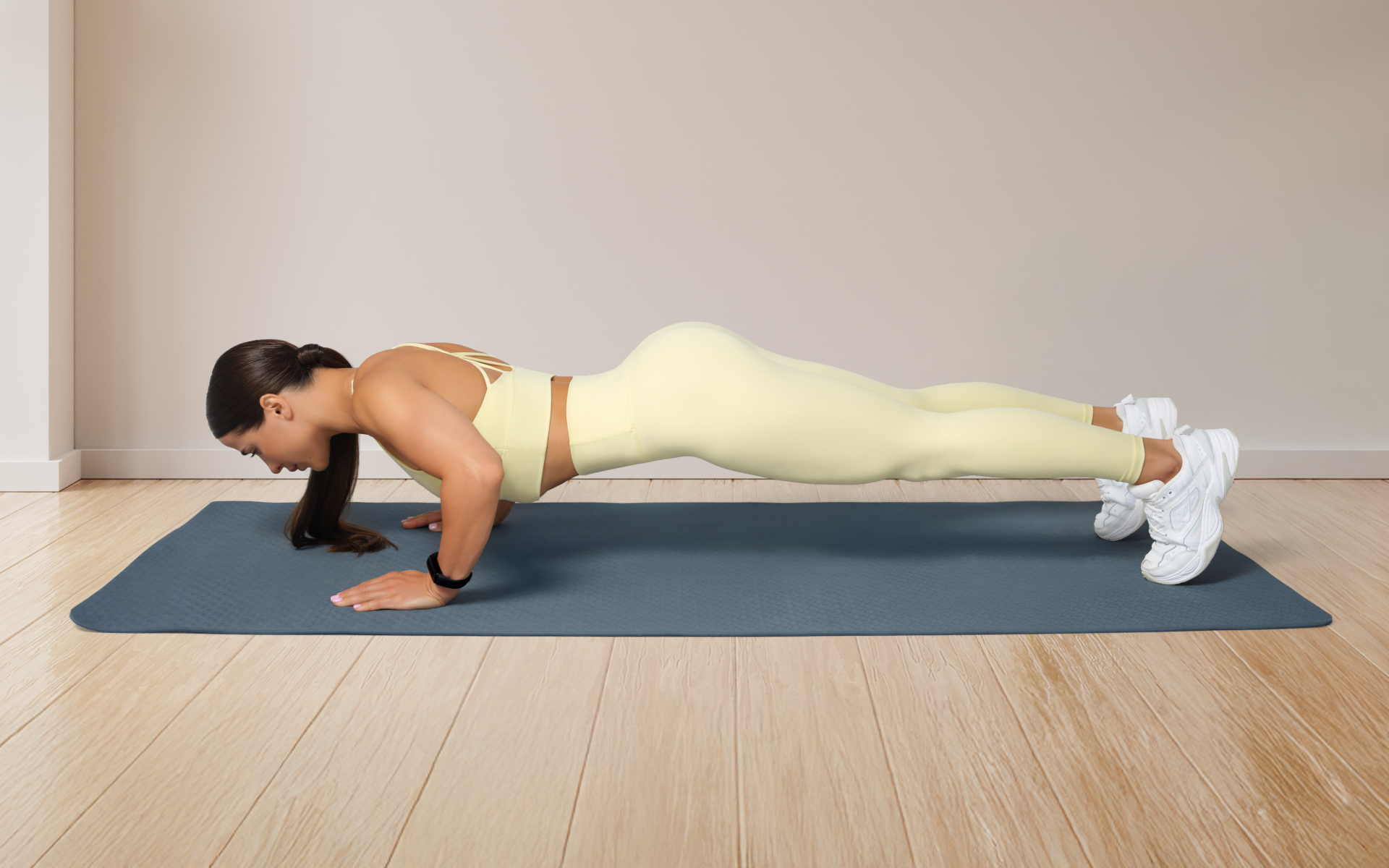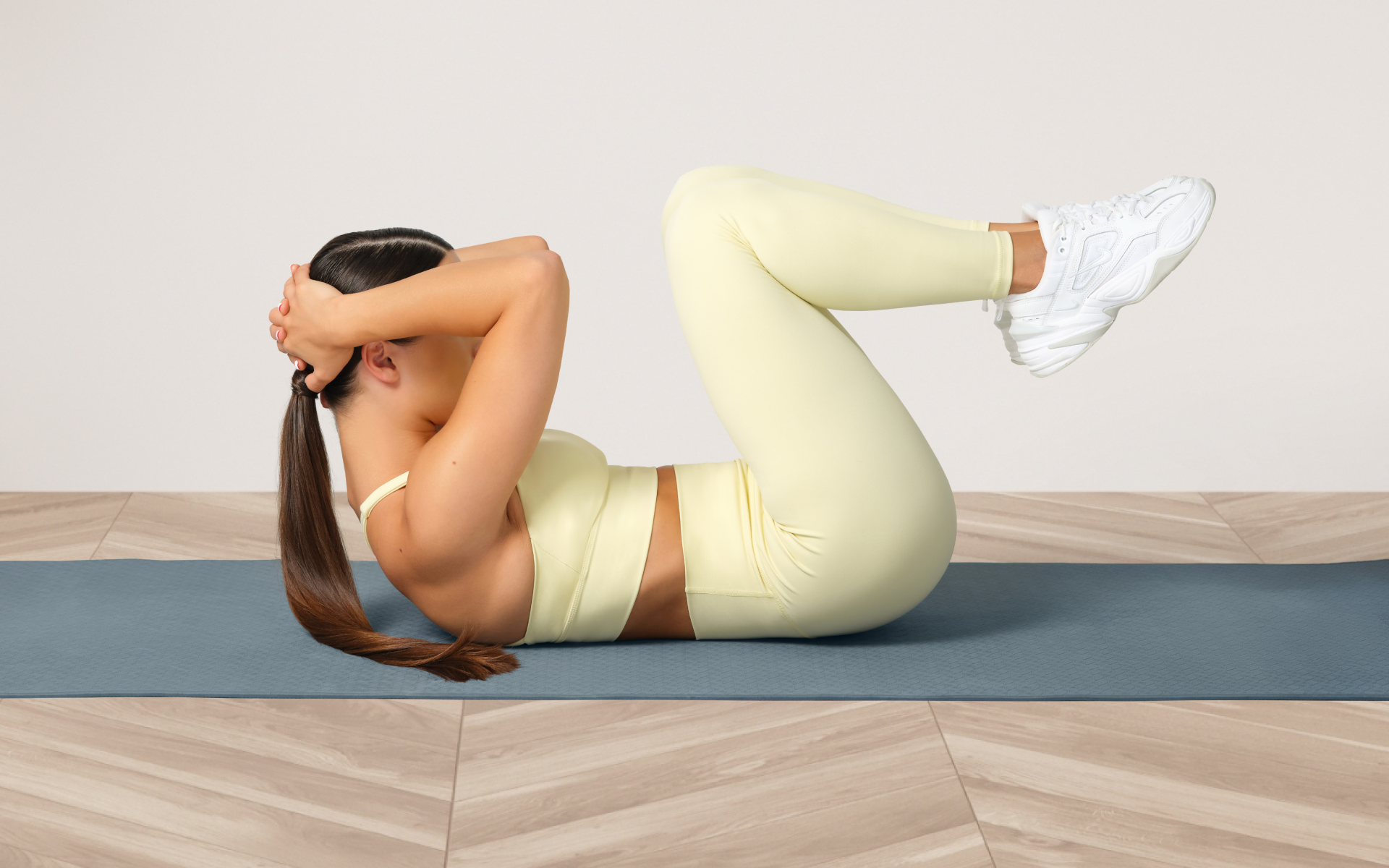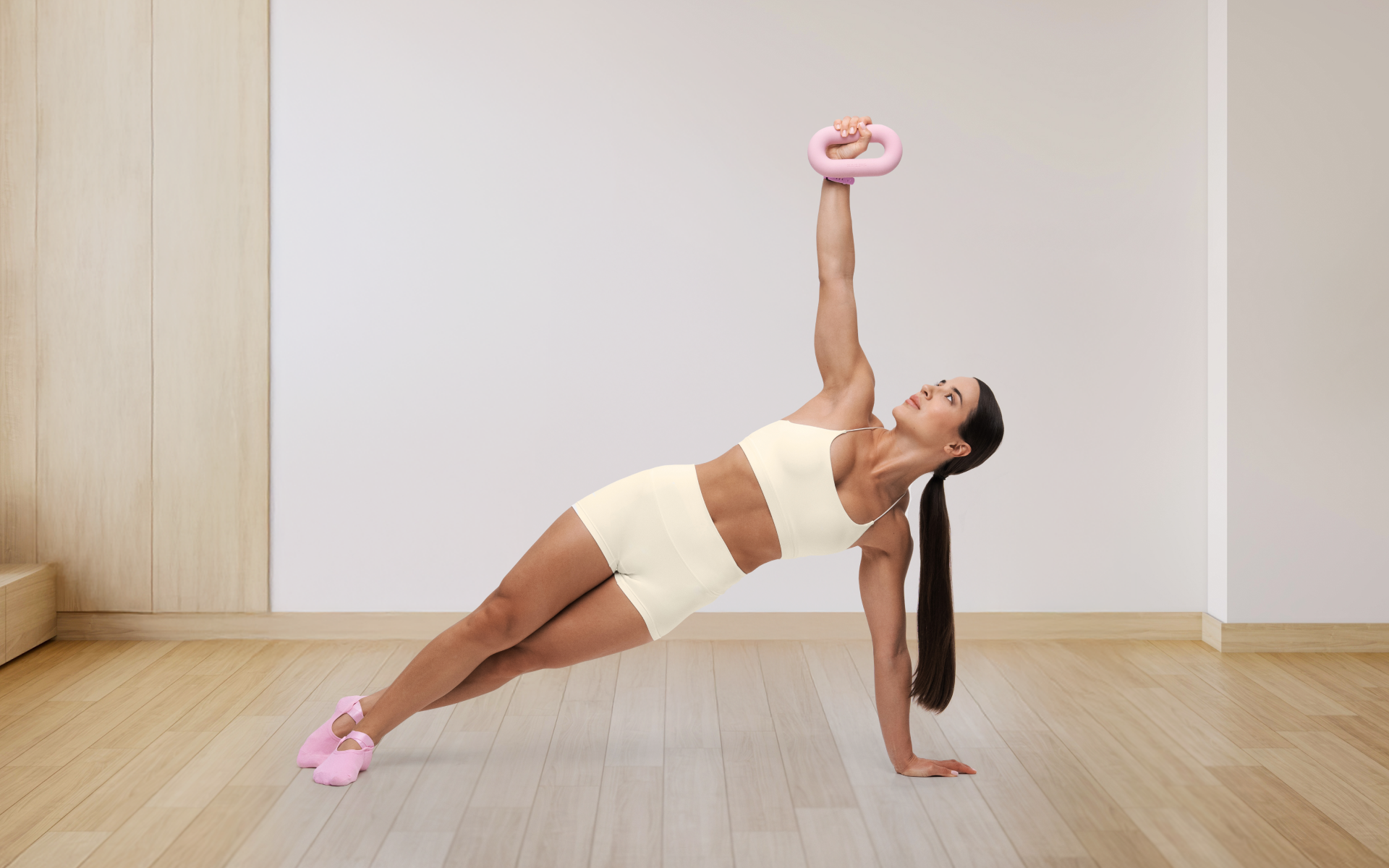Research into how motivation works shows that it’s not a constant, but rather can be a fluctuating state influenced by various internal and external factors (7). In fact, neuroscience suggests that our brains have evolved to be energy-efficient, which can potentially lead to preference rest over exertion, especially when it comes to habits like exercise (3).
Knowing this, it’s easy to see why, after a period of inactivity, getting back into an exercise routine can seem daunting. Given that you’ve been inactive for a while, your muscles are probably deconditioned and you might be feeling lethargic or even intimidated by the thought of starting again. It’s even harder when you’ve lost all the motivation.
This guide will provide practical steps and tips to help you reignite your desire to exercise, overcome these hurdles, and get back into a healthy and sustainable fitness routine.
How Do I Start Fitness Again When I’ve Lost All Motivation?
First off, you start without motivation; motivation comes after you start. This might sound counterintuitive, but it’s true – the process of taking action can itself be a powerful motivator and we’ll explain how that works.
Getting “fit” is a very broad concept and can mean different things to different people. Some might be looking to lose weight, others to build muscle, while some just want to improve their overall health and wellbeing.
Regardless of your goal, thinking of motivation as an outcome of action rather than a prerequisite can help you overcome the lack of drive to exercise.
What does that mean actually? Well, simply put, the more you do something, the more motivated you become to continue doing it.
Let’s talk about a loop called the Motivation-Action loop. It’s a circular process that involves taking action, generating motivation, and its regulation (9).
It’s not an arbitrary concept; it’s based on neuroscience and how our brains work. When we take action, our brain releases chemicals like dopamine which has a positive impact on our mood and motivation (8).
These chemicals not only make us feel good but also create a desire to repeat the behavior that caused their release – in this case, exercise!
So, by simply starting to exercise, even if you don’t feel motivated at first, you can kickstart this loop and gradually build up your motivation over time.
Now, we know that “just do it” is an oversimplification. Sounds good in theory but it’s not always easy to put into practice. With that in mind, let’s break down the process and give you some more practical steps to get started.
If you struggle to even flirt with the idea of giving up your favorite foods or working out till your legs give way – BetterMe app is here to breathe a fresh perspective into the way you view the weight loss process! Check out the app and experience the fun side of fitness and dieting with BetterMe!
How Do I Start Exercising After Years of Inactivity?
To start exercising after a long time, consider these essential elements:
- How Easy It Is for You To Start
- How Safe It Is for You to Continue
- How Easy It Is for You To Keep At It
Here’s why each of these elements is totally necessary.
-
How Easy It Is for You To Start
You’ve made your mind up; it’s now or never. You’ll choose the best exercises to start working out again and push yourself like never before. After all, you’ve wasted enough time, and it’s time to get back on track.
The thing is; having such grand plans doesn’t always go the way we imagined. There are a few possible ways it could go:
- You’re motivated, take on too much, and end up injuring yourself
- You get overwhelmed and give up before you even start
- You feel so out of shape that you can’t do what you used to, which becomes demoralizing.
There’s a solution to this; SMART Goals.
SMART stands for Specific, Measurable, Achievable, Realistic, and Time-bound. When setting your goals to start exercising again, make sure they meet these criteria.
For example, instead of saying “I’ll run 10 miles every day,” a SMART goal would be “I’ll walk for 20 minutes three times a week.” This goal is specific, measurable (20 minutes), achievable based on your current fitness level, realistic, and time-bound (three times a week).
Say “I’ll stick to a weekly 4-day workout routine for weight loss’’ instead of “I want to lose weight fast.”
By setting SMART goals, you’re setting yourself up for success and avoiding potential setbacks that could hinder your progress.
-
How Safe It Is for You to Continue
Safety should always be a top priority when starting or restarting an exercise routine. As we mentioned earlier, injury can be a possibility when you start exercising again at an intensity, volume or load too high for you, after a long time away.
You’re not safe to continue a new exercise routine if:
- You feel intense pain or discomfort during exercise
- You have a pre-existing injury that is aggravated by the new exercises
- You’re feeling lightheaded, dizzy, or nauseous during or after exercise.
- You aren’t familiar with proper form or technique for the exercises you’re doing.
- You’re taking on too much too soon, in terms of the weights you’re lifting, how frequently you’re exercising, or the duration of your workouts.
So, how to prevent these safety concerns? Here are a few tips:
- Start with low-intensity exercises, gradually increasing the intensity as you gain strength and endurance.
- Consult with a fitness professional or physical therapist to ensure that your exercise routine is appropriate for your current fitness level and any pre-existing conditions.
- Properly warm-up before each workout to prepare your muscles and joints for the movements to come (6).
- Resist the urge to push through pain or discomfort; listen to your body and modify exercises if needed.
It’s always better to start slow and build up gradually than to rush into things and risk injury.
While on the topic of injury, it’s worth differentiating between muscle soreness (to be expected when starting a new exercise routine) and acute pain that is a sign of injury.
Muscle soreness, also known as delayed onset muscle soreness (DOMS), typically occurs 24-48 hours after exercise and is characterized by mild discomfort in the muscles. It’s normal and should subside within a few days (1) (4).
Acute pain, on the other hand, can happen during exercise and is usually sharp and intense. It’s a sign that something is wrong, and you should stop exercising and get it checked out.
Being aware of the difference can help you determine if your discomfort is normal or if you need to seek medical attention.
-
How Easy It Is for You To Keep At It
An elusive aspect of exercise is consistency. We’ve all been there; we start strong, but somewhere along the way, life gets in the way and takes us off track. You get frustrated, demoralized, and end up giving up.
What most of us don’t realize is; there’s a neuroscientific explanation for this lack of consistency.
You see, motivation is not a finite resource; it fluctuates depending on various factors like energy levels, stress, and mood. There will be days where you’re highly motivated to exercise, and other days where you just don’t feel like it.
In these moments of low motivation, you need to have systems in place to help you stay on track. One such system is creating a routine. When something becomes part of your daily routine, it requires less motivation to do it because it becomes a habit.
In addition to that, these tips can help you stay consistent with your exercise routine:
- Set realistic goals and expectations; don’t expect to see drastic changes overnight.
- Find an exercise that you enjoy, rather than forcing yourself to do something you dislike.
- Keep track of your progress, no matter how small, to stay motivated and celebrate your achievements.
- Don’t be too hard on yourself when you have an off day; instead, focus on getting back on track the next day.
- Find a workout partner or join a group fitness class to help you stay accountable and motivated.
Read more: Micro Tears In Muscles After Workout: Why Your Body Aches and What To Do About It
How To Start Exercising Again At Home
Earlier we mentioned that ease of entry (i.e. how easy it is to start any physical activity) is crucial when restarting your exercise routine. And what’s easier than starting at home?
Home workouts are actually more beneficial than you might think. They’re convenient, time-saving, and cost-effective; no need to commute or pay for a gym membership.
Plus, with the abundance of home workout options available online nowadays, you can find something that suits your fitness level and preferences.
Here are some tips to help you get started with exercising at home:
- Designate a specific area in your home for exercise; this will help you create a workout-friendly environment and minimize distractions.
- Invest in some basic equipment like dumbbells, resistance bands, or a yoga mat to add variety to your workouts.
- Use online resources like workout videos or fitness apps to guide you through exercises and keep you motivated.
- Don’t be afraid to get creative and incorporate household items into your workouts; a chair can double as a bench, and a water bottle can act as a weight.
- Schedule your home workouts just like you would schedule any other important task, to ensure that you make time for it. If a morning workout benefits you, even better; get it done before the day gets too hectic.
- Remember to still prioritize safety. Just because you’re working out from home doesn’t mean you can skimp on proper form and technique.
Here’s a 30-day get back in shape workout plan to help you ease back into exercising:
- Week 1: Start with low-intensity exercises like walking, light jogging, or bodyweight exercises (push-ups, squats, lunges).
- Week 2: Increase the intensity and duration of your workouts; add in some strength training exercises using dumbbells or resistance bands.
- Week 3: Incorporate high-intensity interval training (HIIT) or circuit training into your routine to challenge yourself.
- Week 4: Continue with a mix of cardio and strength exercises, but also include rest days for recovery.
Whether you’re a workout beast or just a beginner making your first foray into the world of fitness and dieting – BetterMe has a lot to offer to both newbies and experts! Install the app and experience the versatility first-hand!
How Long Does It Take Your Body To Get Back In Shape?
Getting back in shape largely depends on your level of fitness before falling out of routine, the length of your inactive period, and the intensity of your workouts.
If you’ve only taken a short break, say for a few weeks, your path back to fitness may be relatively quick. However, if you’ve been inactive for several months or more, it could take an equal amount of time to regain your previous fitness level.
Even with these considerations you should expect visible changes in your body and increased stamina within 4-6 weeks of consistent exercise.
That said, getting back in shape shouldn’t be rushed. It’s more important to gradually build up your strength and stamina to avoid injury, even if it takes a little longer.
Is It Easier To Get Back In Shape If You Were Fit Before?
Yes, it is easier to get back in shape if you were previously fit before. Your body has already adapted to exercise and you have a better understanding of proper form and technique.
You also may have heard of the concept; muscle memory, this may help regain strength and muscle mass faster than someone starting from scratch (12).
However, it doesn’t mean that it will be easy or that you can skip the necessary steps to get back in shape. You still need to start slow, maintain proper form and gradually increase intensity to avoid injury.
Read more: 6 Wall Pilates Ab Workout Exercises You Should Include In Your Routine
Frequently Asked Questions
How to Start Exercising Again at 40?
At 40, your body is still quite adaptable. Begin with low-impact exercises such as brisk walking, swimming, or cycling. Incorporate strength training to protect bone health and increase muscle mass (5) (10). Remember to always warm up before working out and cool down afterwards.
How to Start Exercising Again at 50?
Beginning to exercise at 50 is still attainable but may requires a focus on flexibility and balance, in addition to cardiovascular health.
You could consider yoga or pilates, and couple this with moderate-intensity cardio like swimming or walking. Always consult your doctor before starting any new exercise regimen.
How to Start Exercising Again at 60?
At 60, exercise is crucial for maintaining mobility and independence. Start slow, with gentle activities such as walking or water aerobics. Activities like Tai Chi can also be beneficial for balance (11).
As always, consult with your healthcare provider before starting any new workout routine.
How Do You Know if You Are Getting Out of Shape?
Signs you are getting out of shape include increased fatigue, decreased strength, shortness of breath during light activities, and more difficulty performing tasks that used to be easy. A declining level of physical fitness might also be accompanied by changes in mood or sleep patterns.
How Many Times a Week Should I Workout?
The recommended guideline for adults is at least 150 minutes of moderate-intensity aerobic activity or 75 minutes of vigorous-intensity activity per week, along with strength training exercises on two or more days a week (2).
Why Is It So Hard to Start Working Out?
Starting to work out can be hard, due to a number of factors including lack of time, feeling intimidated, or not knowing where to start. Mental barriers such as fear or lack of motivation can also make it difficult. Remember, starting is often the hardest part. Once it becomes a habit, working out can be a very rewarding part of your routine.
The Bottom Line
Starting to exercise again after years of inactivity can seem daunting, but with the right mindset and approach you can overcome any challenges and achieve your fitness goals. Remember to start slow, focus on safety, set SMART goals, and find ways to stay consistent.
DISCLAIMER:
This article is intended for general informational purposes only and does not serve to address individual circumstances. It is not a substitute for professional advice or help and should not be relied on for making any kind of decision-making. Any action taken as a direct or indirect result of the information in this article is entirely at your own risk and is your sole responsibility.
BetterMe, its content staff, and its medical advisors accept no responsibility for inaccuracies, errors, misstatements, inconsistencies, or omissions and specifically disclaim any liability, loss or risk, personal, professional or otherwise, which may be incurred as a consequence, directly or indirectly, of the use and/or application of any content.
You should always seek the advice of your physician or other qualified health provider with any questions you may have regarding a medical condition or your specific situation. Never disregard professional medical advice or delay seeking it because of BetterMe content. If you suspect or think you may have a medical emergency, call your doctor.
SOURCES:
- Advances in Delayed-Onset Muscle Soreness (DOMS): Part I: Pathogenesis and Diagnostics (2018, pubmed.ncbi.nlm.nih.gov)
- American Heart Association Recommendations for Physical Activity in Adults and Kids (2018, heart.org)
- Avoiding sedentary behaviors requires more cortical resources than avoiding physical activity: An EEG study (2018, sciencedirect.com)
- Delayed onset muscle soreness (DOMS) (n.d., physio-pedia.com)
- Effects of Resistance Exercise on Bone Health (2018, e-enm.org)
- Effects of Warming-up on Physical Performance: A Systematic Review With Meta-analysis (2010, journals.lww.com)
- Mechanisms of motivation–cognition interaction: challenges and opportunities (2014, link.springer.com)
- Neuroscientific Model of Motivational Process (2013, frontiersin.org)
- Psychology of motivation and actions (2001, researchgate.net)
- Strength training: Get stronger, leaner, healthier (2023, mayoclinic.org)
- Tai Chi Chuan can improve balance and reduce fear of falling in community dwelling older adults: a randomized control trial (2018, ncbi.nlm.nih.gov)
- The concept of skeletal muscle memory: Evidence from animal and human studies (2020, onlinelibrary.wiley.com)










